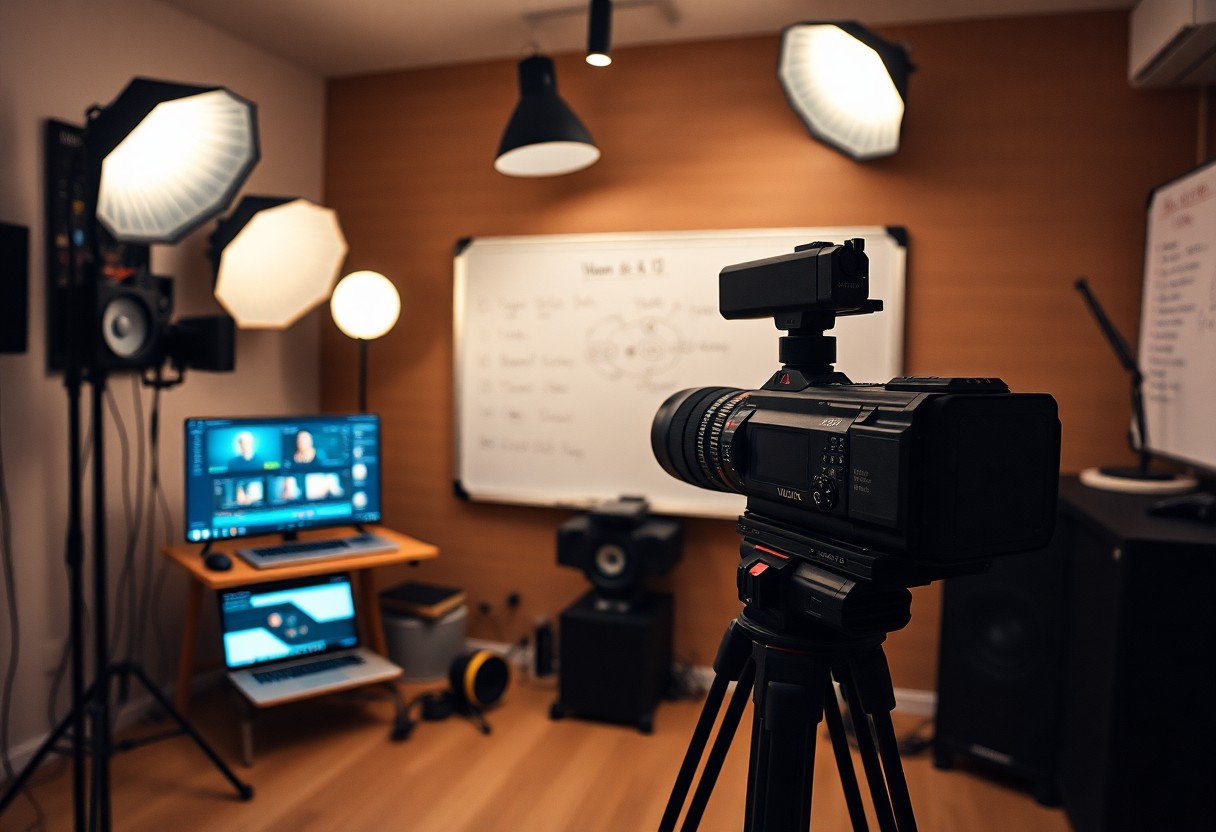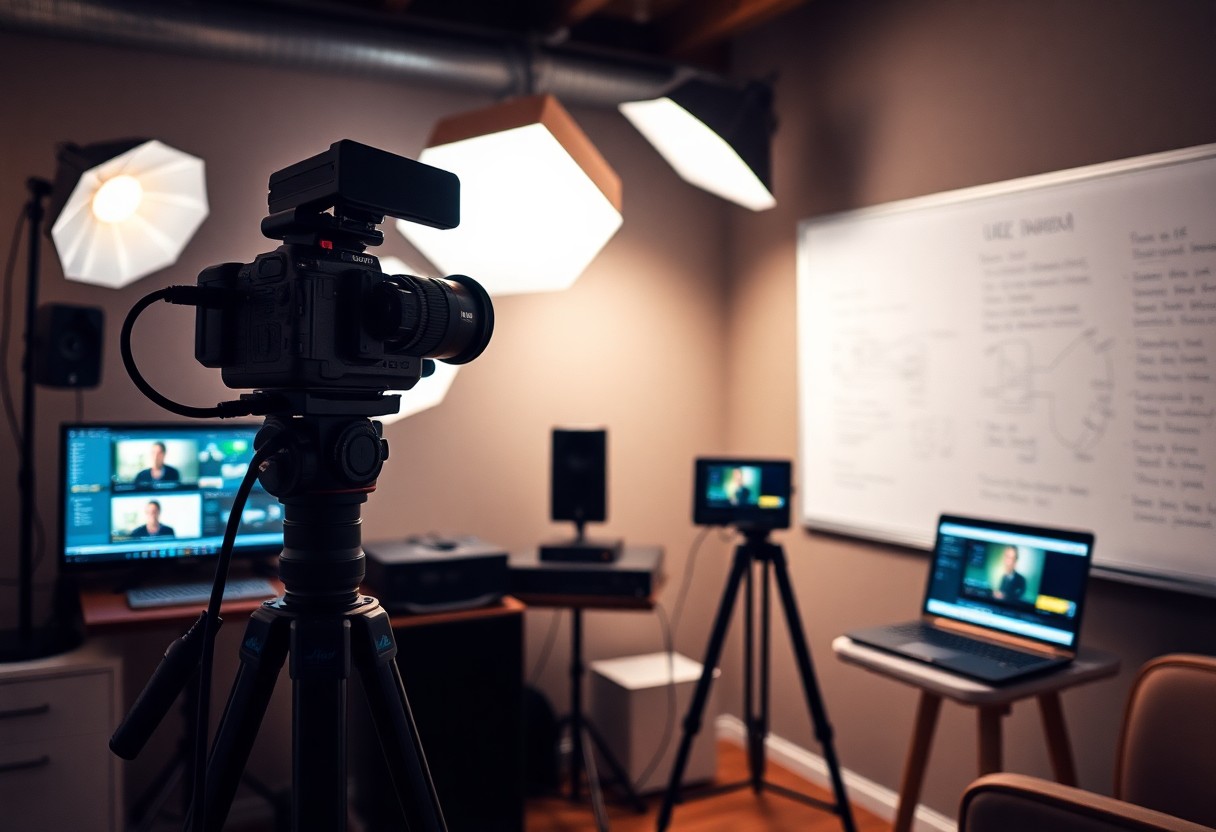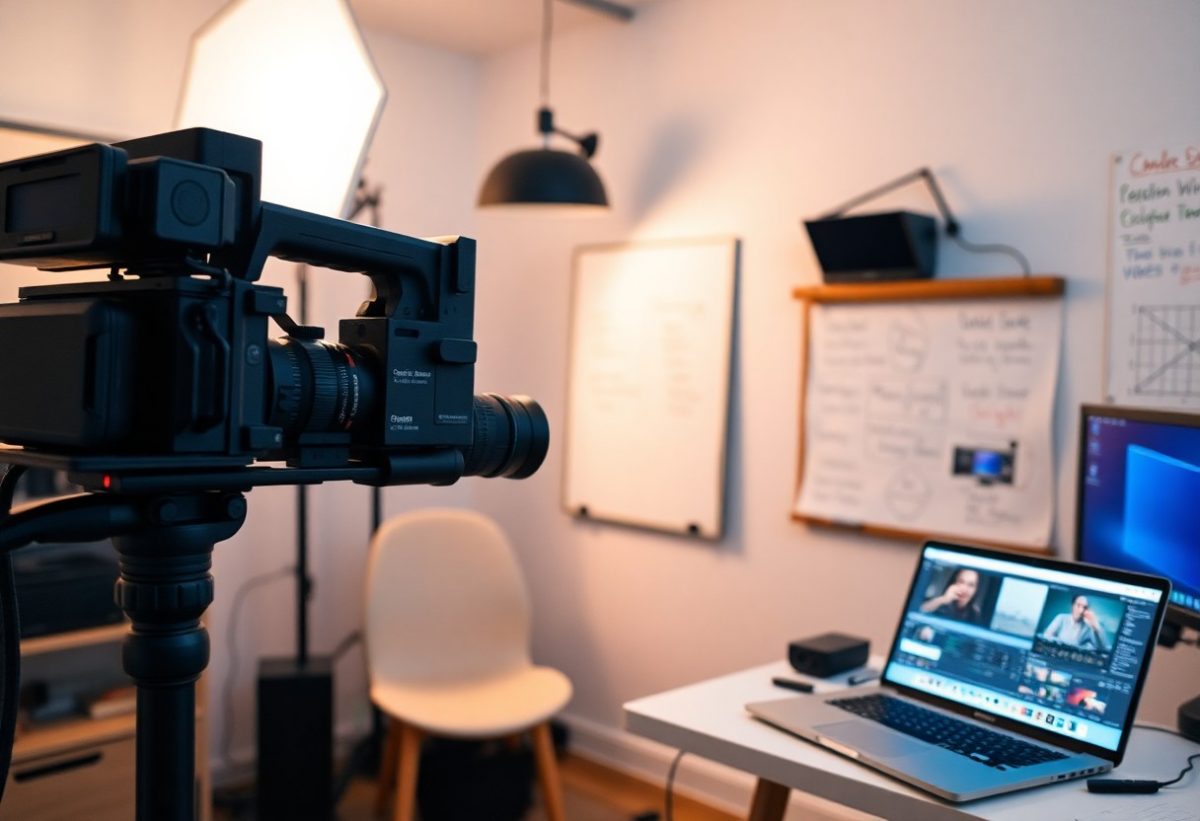Production quality can significantly impact your online courses, elevating your content and enhancing student engagement. Whether you’re a seasoned educator or new to course creation, understanding the fundamental techniques of video production will enable you to deliver high-quality material that resonates with your audience. In this post, you’ll learn crucial tips that will help you create polished, professional videos, from planning your content and optimizing your filming environment to editing effectively and promoting your courses successfully. Get ready to take your online course videos to the next level!
Pre-Production Planning
Before submerging into video production, effective pre-production planning is important for creating a coherent and impactful online course. This stage sets the foundation for your content, ensuring you stay organized, focused, and aligned with your educational goals. By investing time upfront, you can streamline the production process and enhance the overall quality of your course materials.
Defining Learning Objectives and Target Audience
Before you begin crafting your course content, it’s important to clearly define your learning objectives and understand your target audience. Knowing what specific skills or knowledge you want your learners to gain will guide your content creation. Additionally, understanding who your students are will tailor your approach, making it more relevant and engaging for them.
Creating a Detailed Script and Storyboard
Among the most effective strategies in video production is crafting a detailed script and storyboard. This approach allows you to map out your content visually and contextually, which aids in organizing your thoughts and ensuring a logical flow throughout the presentation.
Hence, a well-structured script not only outlines what you will say but also details visual elements, timing, and transitions. This provides clarity on how each segment connects, helping to maintain engagement and ensure that all important points are covered. Additionally, storyboarding allows you to visualize your shots, which is invaluable for planning camera angles, lighting, and other production elements. By thoroughly preparing in this way, you set yourself up for a smoother production process with less room for errors and miscommunication.
Essential Equipment Setup
There’s a lot that goes into creating high-quality video for your online courses, and having the right equipment setup is key. From cameras to sound systems, each component plays a vital role in delivering a professional-grade learning experience. Investing time in selecting the right tools will enhance your production quality significantly, ensuring your viewers remain engaged and attentive.
Camera and Video Quality Requirements
To achieve a polished look in your videos, it’s important to choose a camera that meets modern video quality standards. Look for cameras that offer at least 1080p resolution for clear visuals, with the option for 4K if your budget allows. Remember to consider features like frame rates and low-light performance for versatile recording options.
Audio Equipment and Sound Optimization
Equipment plays a major role in ensuring your course materials are easy to follow. Using quality microphones will significantly improve your audio clarity, which is necessary for effective communication. Consider using lavalier or shotgun microphones to capture crisp sound while minimizing background noise.
At the same time, sound optimization shouldn’t be overlooked. You can enhance audio quality further by utilizing pop filters and soundproofing your recording space. Monitoring sound levels through headphones during recording will help you catch any issues early, ensuring a smooth final product that enhances the learning experience for your audience.
Lighting Configuration for Professional Results
Behind great video content, there’s often an effective lighting setup that elevates the overall appearance. Proper lighting can transform a dull filming environment into a vibrant one, making your subjects look their best and drawing viewers in. It’s important to consider both natural and artificial light sources to create a balanced effect.
Equipment like softbox lights, ring lights, or LED panels can help you achieve the perfect balance of illumination. Position your lights at 45-degree angles to eliminate harsh shadows and maintain a polished look. Experimenting with different setups will allow you to discover what works best for your specific recording environment, ultimately enhancing the professionalism of your online courses.

Recording Techniques
Not all recording techniques are created equal; you need to adopt methods that enhance the quality of your online courses. Proper audio, lighting, and camera setups significantly contribute to engaging content. Strive for a professional atmosphere, which not only improves your delivery but also retains your audience’s attention. Experiment with different methods to find what works best for you and your teaching style.
Camera Angles and Framing
Angles can dramatically affect how your message is perceived. Position your camera at eye level to create a more relatable connection with your audience. Experiment with various angles to highlight different aspects of your presentation or to illustrate key points. Don’t forget to maintain a balanced frame; avoid too much empty space around you, as it can distract from your message.
Presentation Skills and On-Camera Presence
Beside technical aspects, your presentation skills significantly impact your video’s effectiveness. Pay attention to your tone, body language, and engagement techniques; these elements foster viewer connection. Practice speaking clearly and confidently, as this builds your credibility and helps convey your expertise effectively. The more natural you appear on camera, the more likely your audience will feel at ease while learning from you.
On-camera presence is about projecting confidence and authenticity. You should practice maintaining eye contact with the camera to establish rapport with your audience. Incorporate gestures and facial expressions to enhance your message and make it more relatable. Over time, refining these skills will not only enhance your delivery but also create a more memorable learning experience for your viewers.
Managing Recording Sessions Efficiently
With effective management of your recording sessions, you can optimize your time and resources, leading to better productivity. Set clear objectives for each session to focus your efforts and ensure you cover all necessary content without unnecessary delays. Keep your recording environment organized and free of distractions, allowing you to concentrate on delivering your best performance.
Efficiently planning your recording sessions is key to maximising output. Create a detailed script or outline before filming to streamline your process and reduce editing time afterward. Additionally, consider batching similar tasks together, such as setting up lighting and sound equipment in one go. This approach helps you maintain momentum, allowing for a smoother workflow and a more polished final product.

Post-Production Workflow
All successful video production projects hinge on an efficient post-production workflow. This stage is where your raw footage transforms into a polished final product that enhances the educational experience for your viewers. Streamlining your process will allow you to focus on teaching and content creation, ensuring that your online course videos are both engaging and informative.
Video Editing Software Selection
At the core of your post-production workflow is the video editing software you choose. Look for programs that meet your specific needs, such as ease of use, features, and compatibility with your operating system. Popular options include Adobe Premiere Pro, Final Cut Pro, and DaVinci Resolve, each offering powerful tools to elevate your production quality.
Basic Editing Techniques
Above all, mastering basic editing techniques will significantly improve your videos. Start with trimming unnecessary footage, arranging clips in a logical sequence, and adjusting audio levels to create a coherent flow. These fundamental skills establish a solid foundation for more advanced editing, ultimately enhancing your viewers’ understanding and engagement.
In addition to trimming and sequencing, understanding transitions, color correction, and audio synchronization is key. You can elevate your content by seamlessly cutting between scenes, adjusting colors to maintain visual consistency, and ensuring your audio complements your visuals. These techniques will make your videos more professional and enjoyable, reinforcing the information you aim to convey.
Adding Visual Elements and Graphics
Above all, incorporating visual elements and graphics can greatly enhance the effectiveness of your presentation. Use text overlays, infographics, and animations to emphasize key points, making your content more accessible and memorable for your audience. This not only enriches the viewing experience but also reinforces important concepts in your course material.
Due to the growing demand for visually stimulating content, adding professional-grade graphics can distinguish your videos from others. Use tools such as Adobe After Effects or Canva to create bespoke graphics that align with your course branding. Moreover, integrating callouts or annotations can clarify complex topics, keeping your learners engaged and helping them retain the information more effectively.
Enhancing Engagement
Unlike traditional learning methods, online courses thrive on engaging content that captivates your audience. By incorporating dynamic visuals and interactive elements, you can keep learners invested and eager to participate. This approach not only bolsters retention rates but also fosters a sense of community among students, encouraging them to actively engage with your materials.
Interactive Elements Integration
Engagement can significantly increase when you integrate interactive elements into your video production. Utilizing quizzes, polls, and discussion prompts throughout your content encourages viewers to think critically and participate actively, enhancing their overall learning experience.
Optimal Video Length and Pacing
Length plays an important role in maintaining viewer attention. Aim for videos that are concise, ideally between 5 to 10 minutes, as this duration is optimal for information retention without overwhelming your audience.
Pacing your content appropriately is important for keeping viewers engaged. Break your material into manageable segments, allowing time for reflection and interaction. This method not only helps facilitate deeper understanding but also encourages learners to stay for the entire duration of your course.
Adding Captions and Transcripts
Optimal accessibility ensures that all learners can benefit from your video content. Including captions and transcripts improves comprehension, particularly for those who may have hearing impairments or prefer reading along as they watch.
To maximize the effectiveness of captions and transcripts, ensure they are accurately synchronized with your video. This added layer of accessibility not only enhances the learning experience for all students but also allows your content to reach a broader audience, increasing overall engagement and inclusivity.
Quality Assurance
After you’ve completed your video production, it’s vital to ensure that every element meets your standards of excellence. Quality assurance is the final step to confirm that your content not only engages the audience but also functions flawlessly. This process involves reviewing both the technical and creative aspects, ensuring that your course materials provide an exceptional learning experience for your viewers.
Technical Review and Testing
About your technical review and testing phase, it’s important to systematically check every technical aspect of your video, including audio quality, lighting consistency, and playback compatibility. You should verify that the video format aligns with the platforms where you plan to host your course. This attention to detail will save you time later and ensures a seamless presentation for your audience.
Content Review and Feedback Implementation
Behind every successful online course is a solid foundation of content review and the implementation of valuable feedback. You should actively seek input from peers, students, or industry professionals to identify any areas for improvement. Integrating constructive criticism can enhance the overall quality and effectiveness of your course material.
At this stage, it’s beneficial to compile all the feedback you’ve received and categorize it into actionable points. Evaluate the suggestions critically, making sure to balance them with your vision and objectives for the course. Once you’ve refined your content based on the feedback, conduct another round of reviews to ensure the final product meets your standards. This iterative process not only elevates your course but also instills greater confidence in your teaching abilities.
Final Words
Following this guide, you should feel empowered to elevate your video production skills for online courses. By implementing the tips and techniques discussed, you can create engaging, high-quality content that enhances your students’ learning experiences. Focus on clear scripting, effective lighting, and sound quality, while also embracing editing tools to polish your final product. As you refine your process and gain more experience, you’ll be better equipped to captivate your audience and deliver valuable knowledge effectively.

